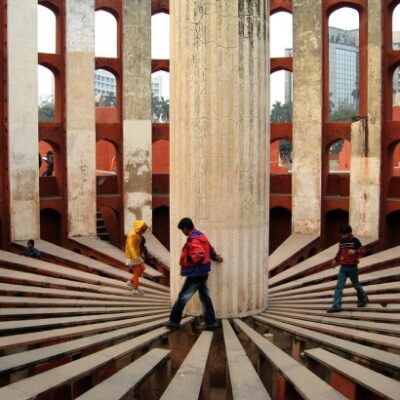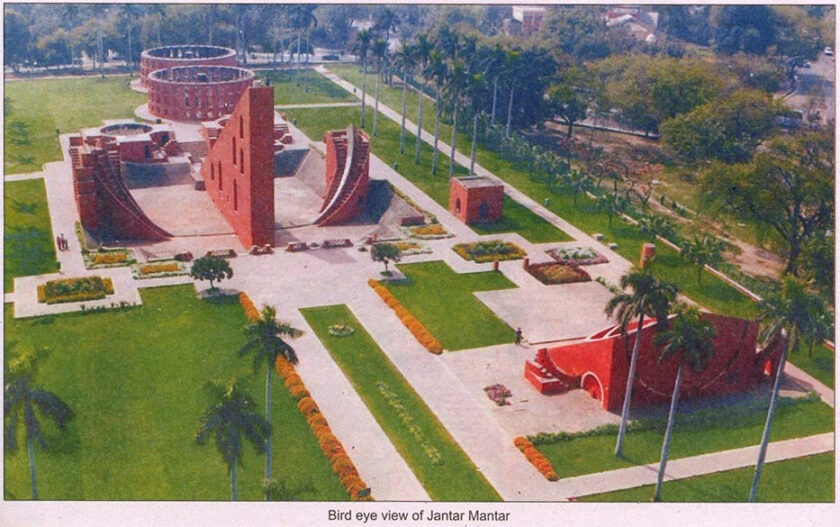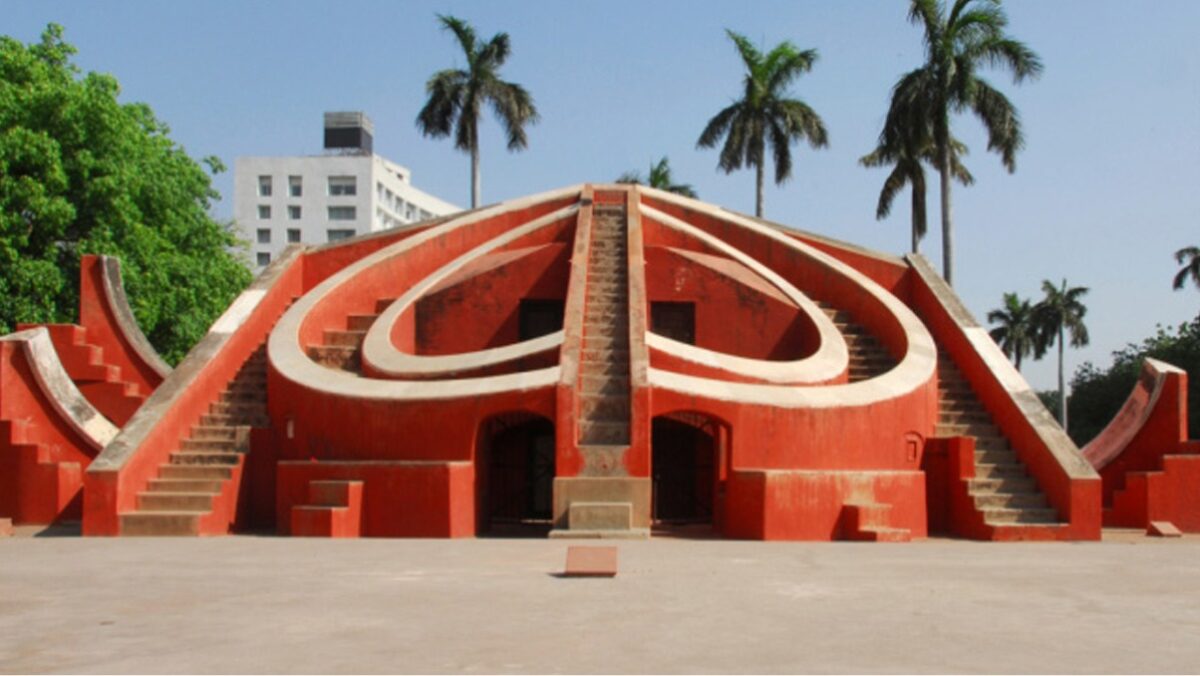Maharaja Jai Singh II of Jaipur constructed five Jantar Mantar in the early 18th century in Jaipur, Ujjain, Mathura, Varanasi, and Delhi. The constructions were completed between 1724 and 1735. Amongst all five Jantar Mantar in India, the largest is in Jaipur which consists of the world’s largest stone sundial with many instruments.
Jantar Mantar is located on Parliament Street, south of Connaught Circus in New Delhi, and the height of Jantar Mantar is 723 feet (220 m). This site is a world heritage site since 2010. At Delhi’s Jantar Mantar, it features 13 architectural astronomy instruments.
The Design and Architecture of Jantar Mantar
The main purpose to design the observatory was to achieve astronomical tables and to predict the times and movements of the sun, moon, and planets. The structure was completed in 1724 but by 1867 the structure faced a considerable amount of decays.
There are four distinct instruments within the observatory of Jantar Mantar in New Delhi and their names are the Jai Prakash Yantra, The Ram Yantra, the Samrat Yantra, the Misra Yantra. These four instruments are the primary instruments of Jantar Mantar which are preserved in the observatory.
The instruments were made with the brick rubbles and after that plastered with lime. A Bhairava temple is also there nearby the structure and it was also built by Maharaja Jai Singh II. After Built Jantar Mantar, Maharaja Jai Singh II had constructed more observatories in Jaipur, Mathura, Ujjain, and Varanasi.

Suggested Read:- Swaminarayan Akshardham Temple in Delhi
When to Visit the Jantar Mantar New Delhi
While the purpose to design Jantar Mantar was astronomy and astrology but today they are also a major attraction point of tourists and significant monuments of the history of astronomy. These observatories are the center of attraction of the thousand of tourists who come here to be the witness of historical architecture.

The observatory is open for everyone from 09:00 am to 07:00 pm. The best time to visit this place is in summer and this is one of the best tourist destinations to visit in the summer in Delhi. Patel Chowk is the nearest metro to reach Jantar Mantar and it is located on the yellow line, the distance between Jantar Mantar and Patel Chowk is 600 meters. This site is one of the famous tourist destinations near Delhi.
Jantar Mantar History
Jantar Mantar is an iconic astronomical observatory located in the heart of Delhi, India. Built in the early 18th century by Maharaja Jai Singh II of Jaipur, Jantar Mantar was designed to measure the movements of the sun, moon, and planets. This impressive structure is made up of 13 architectural astronomy instruments, which are still used by astronomers today. The Jantar Mantar observatory is a testament to India’s rich scientific and architectural heritage, and is recognized as a UNESCO World Heritage site. Visitors can learn more about the history and significance of this unique site by taking a guided tour, available throughout the day.
Jantar Mantar Timing
Jantar Mantar, one of Delhi’s most popular tourist attractions, is open every day of the week from 9:00 am to 5:00 pm. Visitors can explore the impressive astronomical observatory, built in the 18th century by Maharaja Jai Singh II of Jaipur, and learn about the history and significance of each of the 13 astronomy instruments on site. Guided tours are available throughout the day, and visitors are encouraged to check the official website for any updates or changes to the timings. With its rich cultural and scientific heritage, Jantar Mantar is a must-see destination for anyone visiting Delhi.
Jantar Mantar Sundial
The Jantar Mantar observatory in Delhi, India is home to some of the most impressive astronomical instruments in the world, including a sundial that is over 27 meters tall. This sundial, known as the Samrat Yantra, is used to measure time accurately to within half a second. The sundial is made up of a massive triangular gnomon that casts a shadow onto a large, circular platform below. The Jantar Mantar sundial is an engineering marvel and a testament to India’s rich scientific heritage. Visitors to the observatory can marvel at this impressive structure and learn about its history and significance by taking a guided tour, available throughout the day.
Also Read:-

thanks for this post. this is really helpful